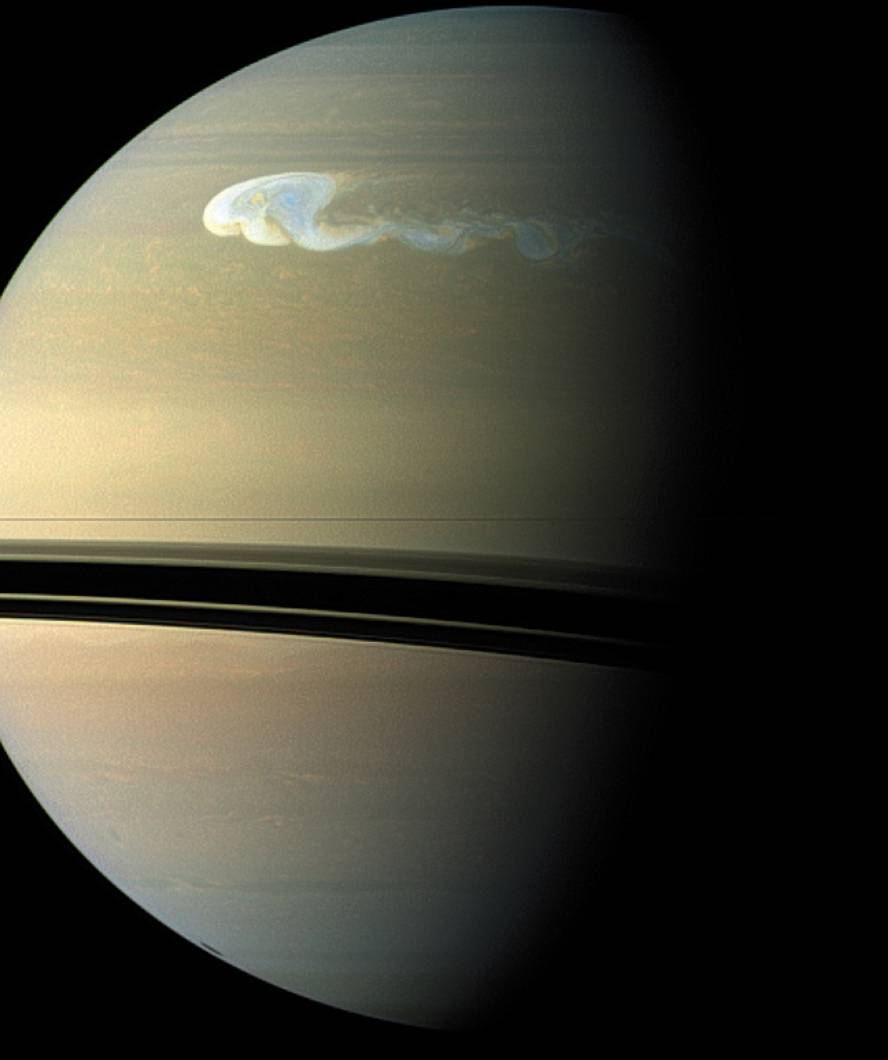Saturn's giant storm is coming forward

Every twenty-nine and a half years a giant storm occurs in Saturn. Regularly. The last has arrived nine years earlier than expected. The first interpretation was made by an international group under the direction of Professor Agustín Sánchez Lavega, of the Group of Planetary Sciences of the UPV. This work has been published on the cover of the prestigious journal Nature.
This unique meteorological phenomenon of the solar system is known by astronomers as the Great White Spot. That is, that giant storm that develops in Saturn. The size of the storm is similar to that of Earth. The latter occurred in 1990, so until 2020 scientists did not expect another. However, in December 2010, some Japanese amateur astronomers detected the first traces of this storm, which surprised scientists, which appeared almost nine years earlier than expected. "Today, after more than six months since the beginning of the storm, the main area is still active, although it is weakened," says Sánchez Lavega.
There are two theories that explain the origin of this phenomenon. Some believe that sunlight is responsible for the winds of Saturn and that the winds would be superficial. Others consider the agent to be the inner heat coming out of Saturn and the winds would then be deep. According to the study published in Nature, the models that have best simulated the storm itself and its influence at the planetary level indicate that the winds, apparently, extend deep to the water mists, that is, sunlight does not arrive. "This, if true, would confirm that the origin of the winds is hot," added Sánchez Lavega.





